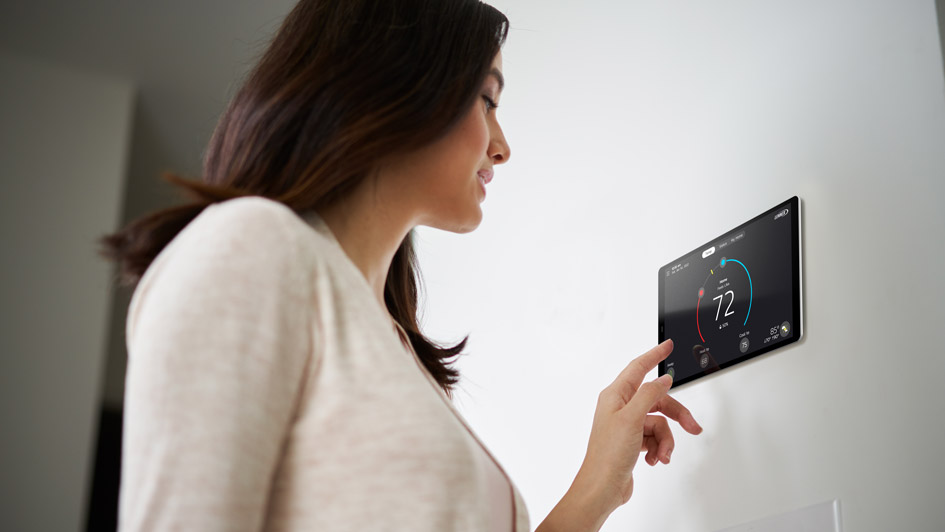
When the weather starts to cool off, you are probably thinking about how you’ll prepare your heating and cooling. After all, HVAC costs routinely make up a big piece of your monthly electric bill. To figure out new ways to save, some people look closely at their thermostat. Could there be a setting they could use to improve efficiency?
The majority of thermostats have a ‘Fan’ or ‘Fan On’ setting. But if the fan is running during a normal cycle, what can the fan setting offer for your HVAC system? This guide will help. We’ll walk through just what the fan setting is and when you can use it to save money over the summer or winter.
How Do I Access the Fan Setting on My Thermostat?
For the majority of thermostats, the fan setting indicates that the HVAC blower fan remains on. A few furnaces may continue to operate at a low level in this setting, but for the most part heating or cooling isn’t being generated. The ‘Auto’ setting, in contrast, will start the fan during a heating or cooling cycle and turn it off when the cycle is over.
There are advantages and disadvantages to trying the fan setting on your thermostat, and whether you do or don’t {will|can|should]] depend on your unique comfort preferences.
Advantages to utilizing the Fan/On setting:
- You can keep the temperature in every room more consistent by enabling the fan to keep generating airflow.
- Indoor air quality can increase because constant airflow will keep forcing airborne particles into the air filter.
- Fewer start-stop cycles for the HVAC fan helps extend its life span. Because the air handler is often connected to the furnace, this means you could avoid needing furnace repair.
Disadvantages to using the Fan/On setting:
- A constant fan will likely raise your energy bills slightly.
- Continuous airflow can clog your air filter up more quickly, increasing the frequency you should replace it.
{Choosing Between|Should My Thermostat Be on|Which Setting for My Thermostat? Fan or Auto in Summer/Winter
In the summer, warm air may linger in unfinished spaces such as the attic or an attached garage. If you leave the fan on, your HVAC system might pull this warm air into the rest of your home, forcing the HVAC system to run longer to keep up with the preferred temperature. In serious heat, this may result in needing AC repair more often as wear and tear gets worse.
The reverse can take place over the winter. Cooler spaces such as a basement will hold onto cooler air, which can eventually drift into the rest of your home. Keeping the fan on could pump more cold air upward, increasing the amount of heating you need to stay warm.
If you’re still trying to figure out if you should try the fan/on setting, remember that every home and family’s comfort needs are not the same. Leaving the HVAC system’s fan on may work for you if:
Someone in your household suffers from allergies. Allergies and similar respiratory conditions can be stressful on the family. Leaving the fan on can help to increase indoor air quality, helping your family breathe easier.
Your home experiences hot and cold spots. All kinds of homes deal with stubborn hot and cold spots that quickly return to a temperature different from the rest of the house. The fan setting should help limit these changes by constantly refreshing each room’s airflow.

